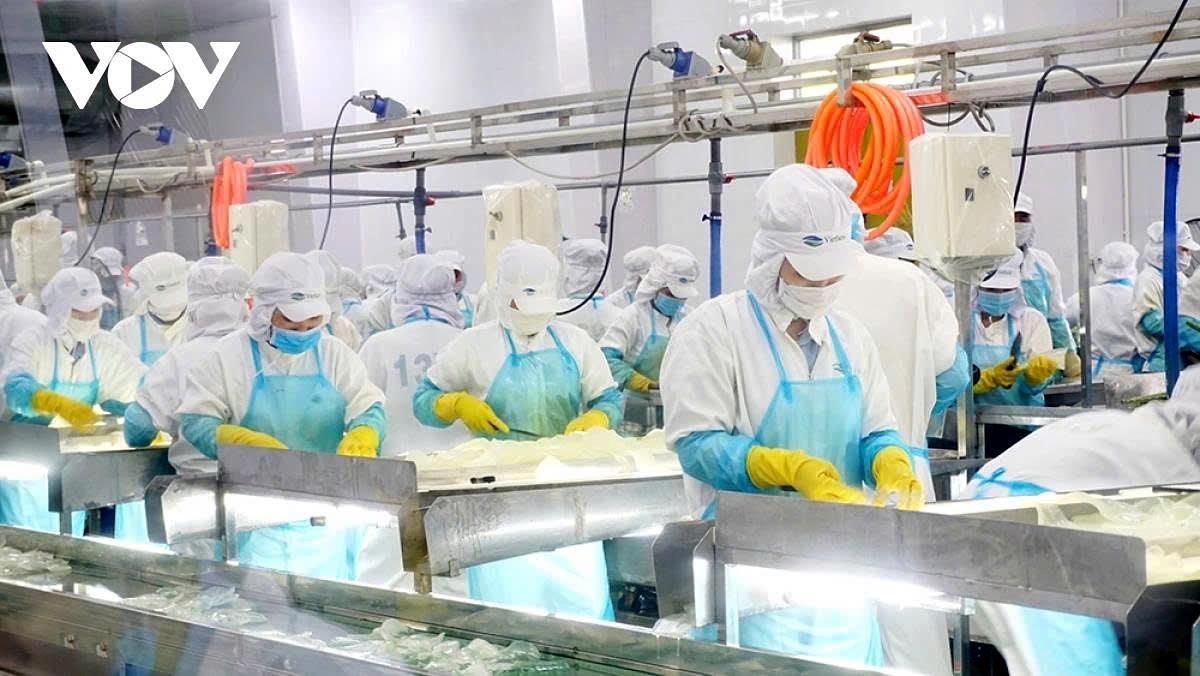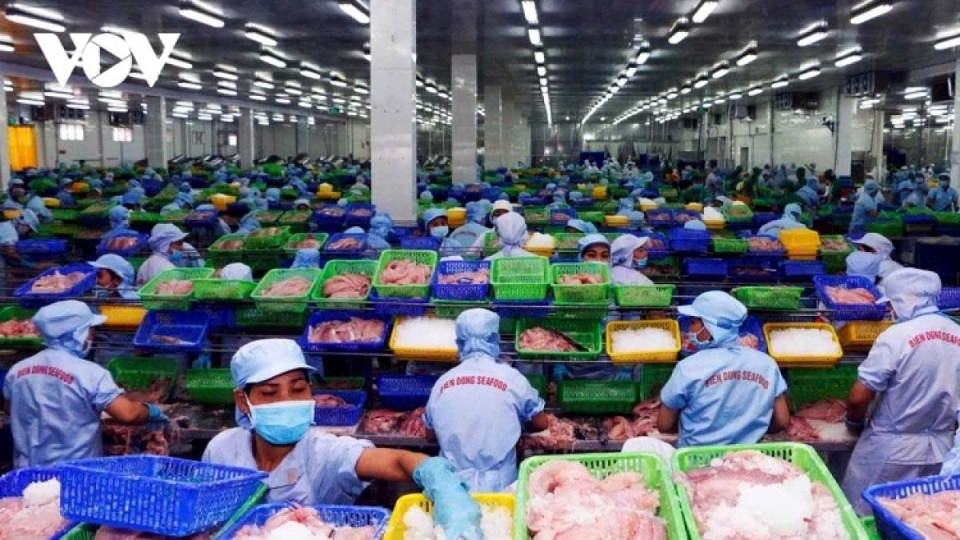US tariff pushes Vietnamese businesses to reshape exports
VOV.VN - Starting August 7, a 20% tariff combined with a series of technical barriers is putting heavy pressure on Vietnamese exports to the United States, forcing businesses to restructure production and business models to adapt.

According to Vu Ba Phu, director of the Vietnam Trade Promotion Agency under the Ministry of Industry and Trade, the United States has long been Vietnam’s top export market and its second largest trading partner after China. Two-way trade between the two countries has grown from just US$451 million in 1995 to US$132 billion in 2024, an almost 300-fold rise. In the first seven months of 2025, the US was Vietnam’s largest export market with US$85.1 billion in export turnover, up 28.1% year on year.
In early April US President Donald Trump decided to apply a baseline 10% tariff on nearly all imports and reciprocal tariffs on a country-by-country basis that could reach 40-46%. Vietnam was among the countries targeted with high tariffs. On August 1, the White House issued an Executive Order adjusting reciprocal tariff rates for 69 countries and territories, cutting the duty on Vietnamese goods from 46% to 20%.
Despite the 20% tariff, Phu affirmed, the US market remains highly attractive for goods originating from Vietnam. “Whether the tariff is 20% or 40%, we must continue exporting to the United States. The question is how to do it more advantageously,” said Phu at a recent seminar in Ho Chi Minh City to boost exports to the US market.
Tran Nhu Tung, vice president of the Vietnam Textile and Apparel Association (VITAS), reported that the challenge is not only about the tariff rate but also about navigating a range of technical requirements. Green standards and international certifications have become mandatory “passports” for entry that requires businesses to invest in energy-efficient production lines, emissions reduction, and recycled materials. Enterprise Resource Planning (ERP) system investments can range from US$1–2 million, excluding costs for renewable energy. Without access to affordable capital, he warned, such transitions are difficult for many firms.
In his opinion, international competition is intensifying. Alongside Bangladesh, India, and Indonesia, China remains Vietnam’s largest rival, benefiting from scale, integrated supply chains, and high productivity. Vietnam’s continued reliance on Chinese raw materials makes rules of origin a decisive factor. For instance, if a Vietnamese company buys US cotton, spins yarn, weaves fabric, manufactures garments, and exports from Vietnam, the tariff rate will be different from importing fabric from China. He cautioned that the US may soon require detailed declarations of the percentage of materials from each country, compelling companies to adopt ERP systems and accurate traceability or face the highest tariff rates.
Meanwhile, Phu pointed out that a 20% tariff on agricultural products is significantly higher than before, pushing businesses to shift from raw exports to deep processing to increase value. Export documentation must be clear and transparent, with industry associations conducting cross-checks to prevent origin fraud, as a single violation could damage the reputation of an entire sector.
At the seminar, Martin Doan, founder and managing partner of AGCG, a globally focused merchant bank with a strong presence in the US and Asia-Pacific region, noted the group is not seeking they the biggest companies, but the most compliant ones. If Vietnamese firms can prove their transparency, digital transformation capacity, and robust traceability, he said, the group is prepared to partner with them and provide flexible, accessible financing solutions in the near future.
For such solutions to be effective, he said, government support policies and international cooperation are essential. This includes preferential credit packages for green and digital transformation, policies to boost domestic material production to reduce import dependency, and strict legal frameworks for traceability. Trade promotion activities should combine on-site and online exhibitions to keep pace with shifting US market demands, while industry associations must act as connectors, sharing information on new standards and assisting members in building compliant export profiles.
If these opportunities are seized, experts said, Vietnam can not only maintain its market share but also move up the global value chain. While the 20% tariff is a short-term obstacle, with a long-term strategy it could serve as a lever to restructure the export sector. With 2025 marking 30 years of Vietnam - US diplomatic relations, this is a timely moment to demonstrate the adaptability and resilience of Vietnamese businesses.





